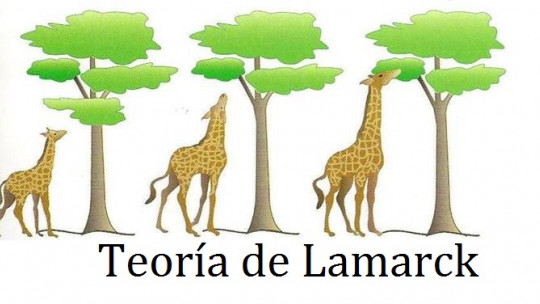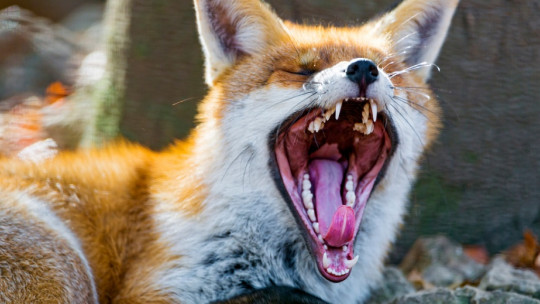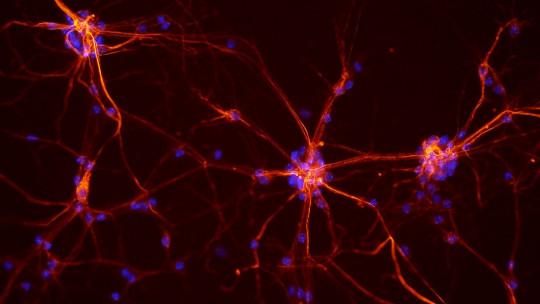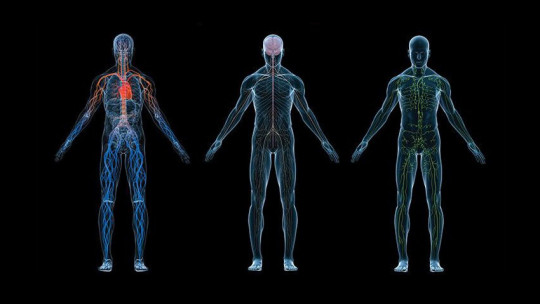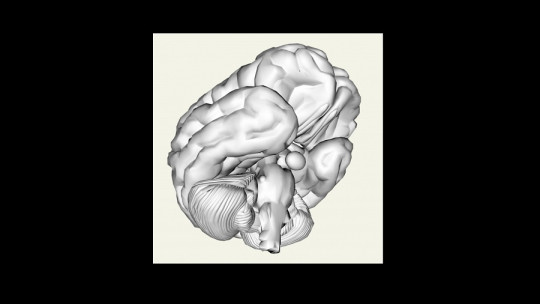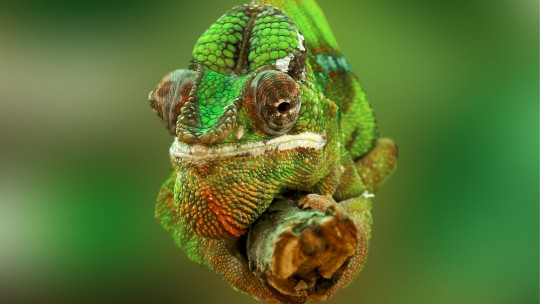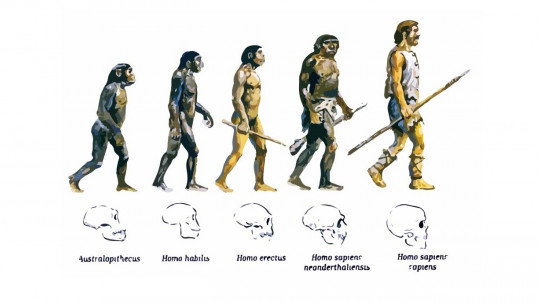
Man is a curious being who throughout history has questioned everything around him and has come up with the most diverse ideas to explain it.
It is not surprising that our ancestors also wondered about the animals and plants they saw around them: were they always like this or have they changed over time? And if there were differences, What are the mechanisms that have been used to carry out these modifications?
These are the main unknowns that have been tried to be resolved through what we know today as the theory of biological evolution, which is at the basis of biology and communicates with a good part of the realm of psychology, by telling us about the origin of certain innate tendencies that could be influencing our behavior and our way of thinking. Let’s see what it consists of.
Evolution of a fundamental theory in Biology
The theory of biological evolution is a set of scientifically developed explanations about how the event known as biological evolution works That is to say, biological evolution is a process observed in reality (even in experimental contexts), and the theory of evolution is a set of steps “assembled” to understand this natural phenomenon.
It should be remembered that a scientific theory is the status of maximum value that a system of scientific laws and hypotheses interconnected with each other can adopt when they have been successfully tested many times and what they help to understand cannot be expressed mathematically. That means, among other things, that although the theory of evolution is “just” a theory, to refute it it would be necessary to create another alternative theory; Today, this hypothetical second theory does not exist, and that is why it is the basis of Biology and current biomedical sciences in general.
On the other hand, the theory of evolution as we understand it today cannot be separated from the research and discoveries of Charles Darwin, but it is not limited to these. Today the scientific community goes beyond Darwin’s proposals, although starting from them and without denying their fundamental elements, and combining that knowledge with that of the world of Genetics as a field of research. But to better understand what this theory is like, let’s start at the beginning: its beginnings and precedents.
Until the 19th century, the predominant idea about the origin of species was creationism. According to this doctrine, an all-powerful entity had created each of the existing living beings, and these had not changed over time. This type of beliefs trace its origins to Ancient Greece, and although they never became hegemonic in Europe, they left their mark on the thinking of some theorists and intellectuals.
But with the period of the Enlightenment, more complex theories that were closer to reality began to emerge in Europe. The most notable at the beginning of the 19th century was the one proposed by Jean-Baptiste Lamarck ; This French naturalist proposed that all species had the will to change and the ability to transfer these acquired changes to their offspring through their actions, a mechanism of transmission of characteristics known as inheritance of acquired characters.
Of course, it must be noted that Lamarck’s ideas were not based on the inheritance of traits present in the ancestors and that they had developed from their interaction with the world; It was more concrete than that. According to this theory, acquired characteristics are specifically those that result from actions taken proactively: for example, trying to switch from a rodent-based diet to one based on fish.
Lamarck, in opposition to the creationists, defended the idea of the evolution of species, but accepted that species were generated spontaneously and did not have a common origin. That is, his theory spoke only of the mechanism by which living beings change over time, and not about how they first arise. I will not go on any further, since you have a very complete article on Lamarckism here: “Lamarck’s Theory and the evolution of species.”
Charles Darwin and the theory of biological evolution
A great step had been taken by admitting the idea of biological evolution through completely natural mechanisms, but Lamarck’s theory had many cracks. It was not until 1895 when the British naturalist Charles Darwin published the book The Origin of Species, in which proposed a new theory of evolution (which would be known as Darwinism) Little by little, this theory would take shape in his successive writings, and it would be seen that it explained biological evolution through a natural mechanism: natural selection combined with sexual selection. Then we will see what they consist of.
Together with the British naturalist Alfred Russel Wallace, (who curiously carried out similar research and reached almost identical conclusions without ever having spoken to him), Darwin presented new ideas in favor of evolution; Yes, with great caution, because the implications of his work put the Church establishment in an uncomfortable situation, which had always attributed the existence of all forms of life to the direct intervention of God.
natural selection
According to Darwin, All species come from a common origin, from which they diversified thanks, in part, to natural selection This evolutionary mechanism can be summarized in that the species best adapted to the environment in which they are found, reproduce more successfully and have offspring that, in turn, have a better chance of reproducing successfully, giving way to new generations. The English naturalist also accepted the idea of extinction, which was the other side of the coin: species less adapted to the environment tended to reproduce less and less, in many cases even disappearing.
Thus, first of all, populations of living beings with different characteristics appeared on the scene, and the environment exerted pressure on them that made some of them have more reproductive success than others, causing their characteristics to spread and causing others to disappear.
What characterized this process was its natural character, unrelated to the influence of a supernatural entity to direct it; It happened automatically, in the same way that a snowball becomes larger due to the influence of the force of gravity applied to the side of a mountain.
sexual selection
Another of the evolutionary mechanisms that Darwin’s theory of evolution describes is sexual selection, which consists of the set of natural dispositions and behavior that make certain individuals be seen as more desirable to have offspring with, and others as less desirable. for the same.
So, sexual selection plays a double game On the one hand, it is complemented by natural selection, because it provides elements that explain why certain individuals have greater reproductive success than others; but on the other hand it plays against them, since there are traits that may be advantageous from the point of view of sexual selection, but disadvantageous from the point of view of sexual selection (that is, the result of interaction with the environment). , with the exception of possible reproductive pairs).
An example of the latter is the peacock’s long tail: it makes it easier to find a mate, but more difficult to stay out of the reach of predators.
Neo-Darwinism
Despite removing divinity from creation and explaining a basic mechanism by which species change and diversify over time, Darwin did not know the term we know today as genetic variability, nor did he know the existence of genes. That is to say, he did not know how the variability of characteristics on which the pressure of natural selection acts appears. For this reason, he never completely rejected the idea of the inheritance of acquired characters proposed by Lamarck.
Unlike Darwin, Wallace never accepted this idea, and from this dispute a new evolutionary theory called Neodarwinism appeared, promoted by the naturalist George John Romanes, who in addition to rejecting Lamarckian ideas in their entirety, believed natural selection was the only evolutionary mechanism, something that Darwin never maintained. It was not until the beginning of the 20th century when Mendel’s laws were accepted, showing that mutations in DNA are pre-adaptive, that is, first a mutation is suffered and then it is tested whether the individual in whom it has occurred is better adapted to the environment or not, breaking the idea of the inheritance of acquired characters.
With this premise, the geneticists Fisher, Haldane and Wright gave a new twist to Darwinism. They integrated the theory of the evolution of species through natural selection and genetic inheritance proposed by Gregor Mendel, all with a mathematical basis. And this is the birth of the theory most currently accepted by the scientific community, known as the synthetic theory. This proposes that evolution is a more or less gradual and continuous change explained through genetic variability and natural selection.
The social impact of the theory of evolution
The biggest problem that Darwin had was dispensing with the figure of the hand of God in his theory about what the explanatory mechanism of biological diversity could be, something unforgivable in times when religion and creationism were hegemonic.
However, Charles Darwin’s theoretical legacy was robust, and over the years the appearance of new fossils gave good empirical support to his theory … which did not make his contribution to science seen in a better light from religious bodies. Even today, environments closely linked to tradition and religion deny the theory of evolution, or consider it “simply a theory,” implying that creationism enjoys the same scientific endorsements. Which is a mistake.
Evolution is a fact
Although we talk like the theory of evolution, It is actually a fact, and there is evidence to not doubt its existence What is being discussed is what the scientific theory that explains the evolution of the species for which there is evidence should be, this process itself is not questioned.
Below you can find several of the tests that demonstrate the existence of biological evolution.
1. Fossil record
Paleontology, the discipline that studies fossils, has shown that geological phenomena take a long time to complete, such as fossilization. Many fossils are very different from current species, but at the same time, they have a certain similarity. It sounds strange but with an example it will be easier to understand.
Glyptodon was a Pleistocene mammal that bears a striking resemblance to a current armadillo but in a giant version: it is a trace of the evolutionary tree that leads to current armadillos. The fossils themselves are also proof of extinction, since they show that in the past there existed organisms that are no longer among us today. The most emblematic example is dinosaurs.
2. Vestiges and imperfect designs
Some living beings have designs that we could say are imperfect. For example, penguins and ostriches have hollow wings and bones, but they cannot fly. The same thing happens with the whale and snake, which have a pelvis and femur, but do not walk. These organs are known as vestiges, organs that were useful to an ancestor but now have no use
This is further proof of evolution that also reveals that this process is opportunistic, since it takes advantage of what is at hand to organize a new organism. The species of life are not the result of an intelligent and well-planned design, but are based on functional “bugs” that are perfected (or not) over the generations.
3. Homologies and analogies
When comparing anatomy between different organisms, we can find cases that, once again, are proof of evolution Some of them consist of homologies, in which two or more species have a similar structure in some parts of their anatomy, but they are used to perform different functions, which is explained because they come from the same ancestor. An example is the limbs of tetrapods, since they all have a similar structural arrangement even though their limbs have different functions (walking, flying, swimming, jumping, etc.).
The other case is analogies, organs from different species that do not have the same anatomy but do share a function. A clear example is the wings of birds, insects and flying mammals. They have been developed in different ways to achieve the same function, that of flying.
4. DNA sequencing
Finally, the genetic code, with some exceptions, is universal, that is, every organism uses the same one. If it were not, it would not be possible for the E.coli bacteria to produce human insulin by introducing into it the gene (of human origin) responsible for generating this substance, just as we do today. Furthermore, GMOs are further evidence that the genetic material of all life forms has the same nature. Another evidence that all species have a common origin and proof of evolution
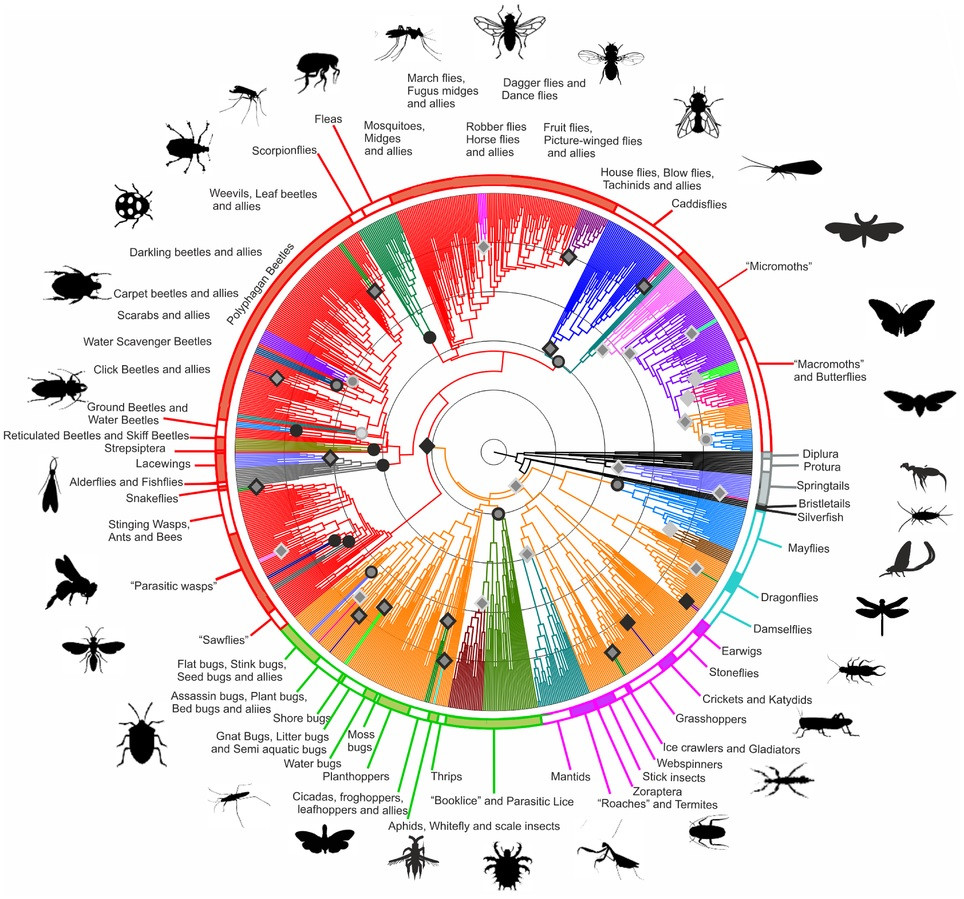
Evolutionary mechanisms
Although we have talked about natural selection as a mechanism that evolution uses to advance, it is not the only one that is known. Here we will see the different types of selection that influence evolution
1. Natural and sexual selection
In the theory of biological evolution born with Darwin, this naturalist originated the idea of natural selection from his observations on the voyage of the Beagle during its journey through the Galapagos Islands. In them, he drew his attention to the fact that each island had its own species of finch, but they all had a similarity between them and those found on the neighboring continent, South America.
The conclusion he reached is that the island finches originally came from the continent, and that upon arriving at each island they suffered an “adaptive radiation”, in this case due to food, thus generating a range of variants starting from the same group. of ancestors; thus, These birds have very different beaks from each other, having adapted to the ecosystem of each island separately
Today we can better clarify the functioning of natural selection. The environment is not stable and changes over time. Species undergo mutations in their genome at random, and these cause them to change their characteristics. This change can favor their survival or, on the contrary, make their lives difficult and cause them to die without offspring.
2. Artificial selection
It is not exactly an evolutionary mechanism, but it is a variety of natural selection It is called artificial, since it is the human being who directs evolution for his own interests. We are talking about a practice that has occurred in agriculture and livestock for millennia, choosing and crossing plants and animals to obtain greater productivity and performance. It also applies to domestic animals, such as dogs, where other characteristics were sought, such as more strength or more beauty.
3. Genetic drift
Before talking about this mechanism, we must know the concept of allele. An allele consists of all the mutational forms of a specific gene. To give an example, the different genes for eye color in men. Genetic drift is defined as a random change in allele frequency from one generation to another, that is, the environment does not act. This effect is better appreciated when the population is small, as in the case of inbreeding where genetic variability is reduced.
This mechanism can eliminate or set characteristics randomly, without the need for the environment to act in its selection. And therefore, in small populations, it is easier for a quality to be lost or gained by chance.
Controversy related to evolution
As we have seen, the most accepted theory of evolution currently is the synthetic theory (also known as modern synthesis), although there are alternatives that are against it because they are considered to contain certain deficiencies or concepts that are not explained or are not included.
1. Neutralism
Until not long ago, it was thought that there were only harmful mutations (negative selection) and beneficial mutations (positive selection). But the Japanese biologist Motoo Kimura stated that at the molecular level there are many mutations that are neutral, that are not subject to any selection and whose dynamics depend on the mutation rate and the genetic drift that eliminates them, creating a balance.
From this idea was born an idea opposite to the one proposed by the synthetic theory, where Beneficial mutations are common. This idea is neutralism This branch proposes that neutral mutations are common, and beneficial ones are the minority.
2. Neolamarckism
Neo-Lamarckism is the part of the scientific community that still maintains that Lamarck’s theory and his inheritance of acquired characters cannot be discarded. From there, an attempt is made to reconcile this idea with genetics, stating that mutations are not random but are the consequence of the “effort” of the species to adapt to the environment. However, Its empirical basis cannot be compared to that of the synthetic theory

